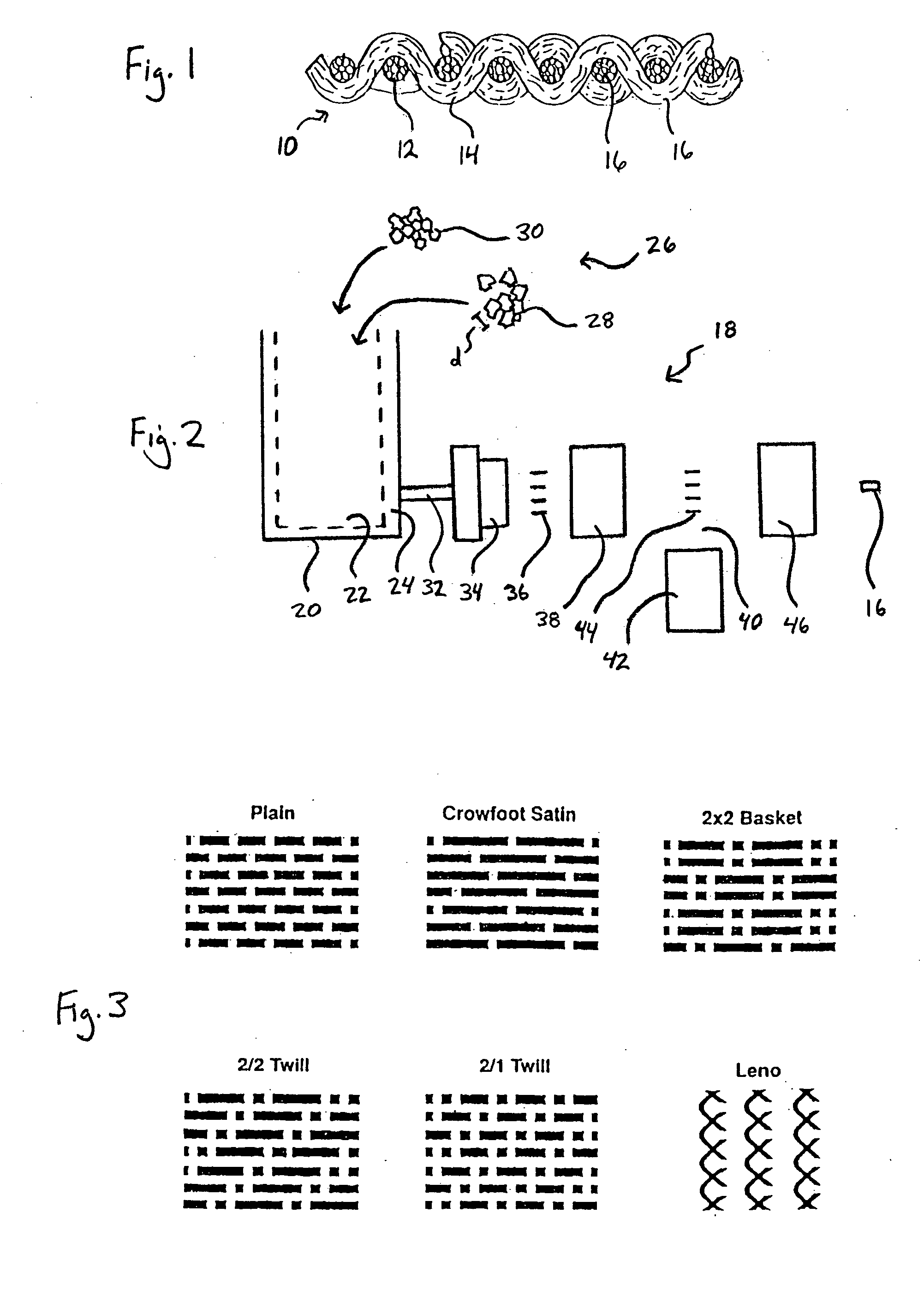Inorganic fabric
a technology of organic fabrics and yarns, applied in the direction of protective fabrics, weaving, synthetic resin layered products, etc., can solve the problems of affecting the performance of fabrics, and affecting the use of fabrics, etc., and achieves excellent thermal properties, good ballistic properties, and superior strength.
- Summary
- Abstract
- Description
- Claims
- Application Information
AI Technical Summary
Benefits of technology
Problems solved by technology
Method used
Image
Examples
Embodiment Construction
[0015] Referring to FIG. 1, a high strength, heat resistant fabric in accordance with the present invention is shown and generally designated 10. As shown, the fabric 10 is comprised of a plurality of fill yarns 12 arranged substantially parallel to one another. Further, a plurality of warp yarns 14 are woven with the fill yarns 12 in a serpentine fashion (i.e., over and under adjacent fill yarns 12). For the present invention, both the fill yarns 12 and warp yarns 14 are comprised of a yarn 16 formed from inorganic volcanic rock, additives and rayon. As a result, the fabric 10 consists solely of the inorganic yarn 16 and exhibits certain desired characteristics discussed below.
[0016] Referring now to FIG. 2, a system 18 for manufacturing the inorganic yarn 16 is depicted. As shown, the system 18 includes a furnace 20. The furnace 20 is preferably a cupola furnace and includes a chamber 22 formed by a sidewall 24. The chamber 22 is dimensioned to receive the raw materials 26 needed...
PUM
| Property | Measurement | Unit |
|---|---|---|
| melting point | aaaaa | aaaaa |
| melting point | aaaaa | aaaaa |
| tensile strength | aaaaa | aaaaa |
Abstract
Description
Claims
Application Information
 Login to View More
Login to View More - R&D
- Intellectual Property
- Life Sciences
- Materials
- Tech Scout
- Unparalleled Data Quality
- Higher Quality Content
- 60% Fewer Hallucinations
Browse by: Latest US Patents, China's latest patents, Technical Efficacy Thesaurus, Application Domain, Technology Topic, Popular Technical Reports.
© 2025 PatSnap. All rights reserved.Legal|Privacy policy|Modern Slavery Act Transparency Statement|Sitemap|About US| Contact US: help@patsnap.com

